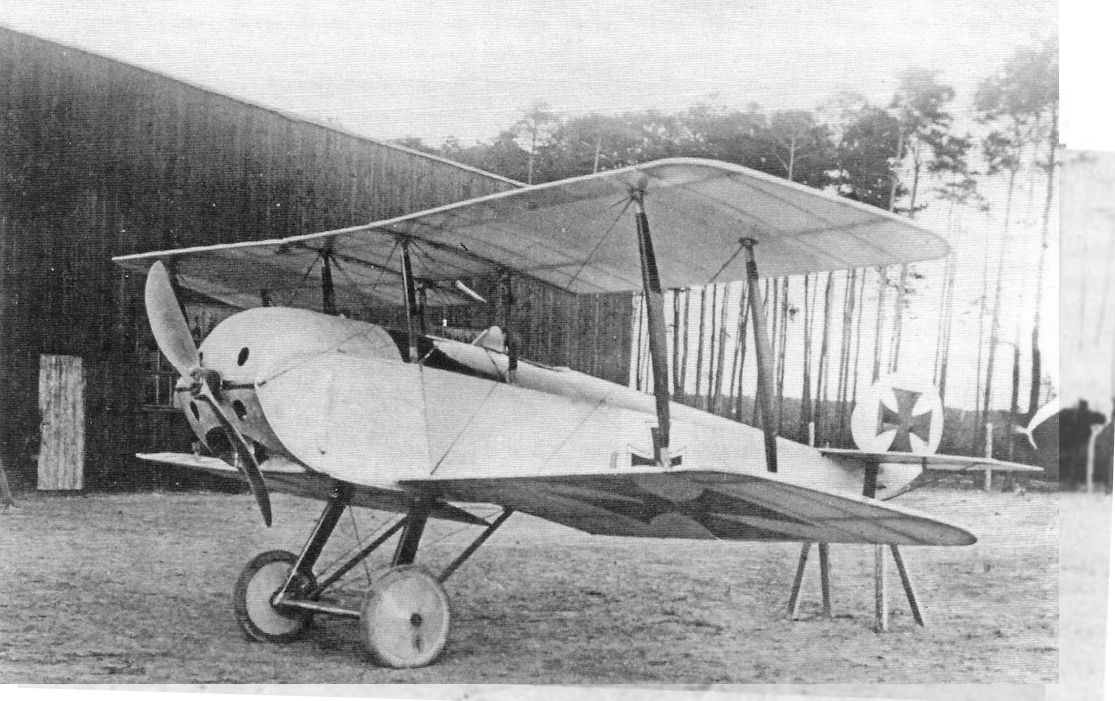O.Thetford, P.Gray German Aircraft of the First World War (Putnam)
Schutte-Lanz D I
This type appeared in 1915, and apart from the absence of vertical fin and modified undercarriage chassis - note the unusual forward rake - the type appears to have been copied from the Sopwith Tabloid. Engine, 100 h.p. Gnome. Span, 7.5 m. (24 ft. 7 3/8 in.). Length, 5.4 m. (18 ft. 8 5/8 in.).
Показать полностью
W.Green, G.Swanborough The Complete Book of Fighters
SCHUTTE-LANZ D I Germany
The Luftfahrzeugbau Schutte-Lanz produced, in 1915, what was subsequently claimed to be the first German single-seat biplane fighter. Designed by Dipl-Ing W Hillmann and Walter Stein, this, the D I, was a lightweight single-bay staggered biplane which had apparently found its inspiration in the Sopwith Tabloid. Of wooden construction throughout with fabric skinning, it was powered by an 80 hp Oberursel (Gnome) seven-cylinder rotary engine, but was rejected by the Idflieg on the grounds that the biplane afforded inferior pilot vision to the monoplane and was therefore unsuited for the single-seat fighter role. Hillmann and Stein introduced some redesign and installed a 100 hp Mercedes six-cylinder water-cooled engine to result in the D II, which, in the event, was never flown.
Max speed, 84 mph (135 km/h) at sea level
Span, 24 ft 7 1/4 in (7,50 m).
Length, 17 ft 8 2/3 in (5.40 m).
Показать полностью
J.Herris German Aircraft of Minor Manufacturers in WW1. Vol II (A Centennial Perspective on Great War Airplanes 50)
Schutte-Lanz D.I & D.II
In the summer of 1915 Schutte-Lanz produced a single prototype of a single-seat scout, the D.I. Designed by Dip. Ing. Wilhelm Hillmann and Walter Stein, the biplane that emerged was obviously influenced by the British Sopwith Tabloid. Powered by a seven-cylinder 80-hp Oberursel rotary engine, the machine was of conventional wooden construction with fabric covering and ply cockpit panels, and aluminium engine cowling. Wing warping was adopted for lateral control. It was unarmed. The aircraft underwent proof testing in February 1916. The pilot's field of vision was poor and Idflieg considered it unsuitable as a fighter compared with contemporary Eindeckers. A revised version with a 100-hp Mercedes six-cylinder in-line engine was proposed as the D.II, but never flew.
Показать полностью
M.Dusing German Aviation Industry in WWI. Volume 2 (A Centennial Perspective on Great War Airplanes 85)
Luftfahrzeugbau Schutte-Lanz, Zeesen (SchuI)
Aircraft Development:
<...>
After the initial disaster with the crashed G-airplane, the decision was made not to develop and manufacture their own aircraft types, but to seek license production of B- and C-airplanes. This gave the shipyard the opportunity to devote itself gradually and with less risk to the special features of aircraft construction.
The Schul D.I was built in 1915 as a replica of the successful British Sopwith Tabloid as the first German fighter biplane, but it was underestimated as a fighter and rejected, as the monoplane was considered more suitable as a fighter due to its better visibility for the pilot. Its planned further development into the D.II with a more powerful 100 hp Mercedes inline engine was therefore cancelled.
<...>
Показать полностью





